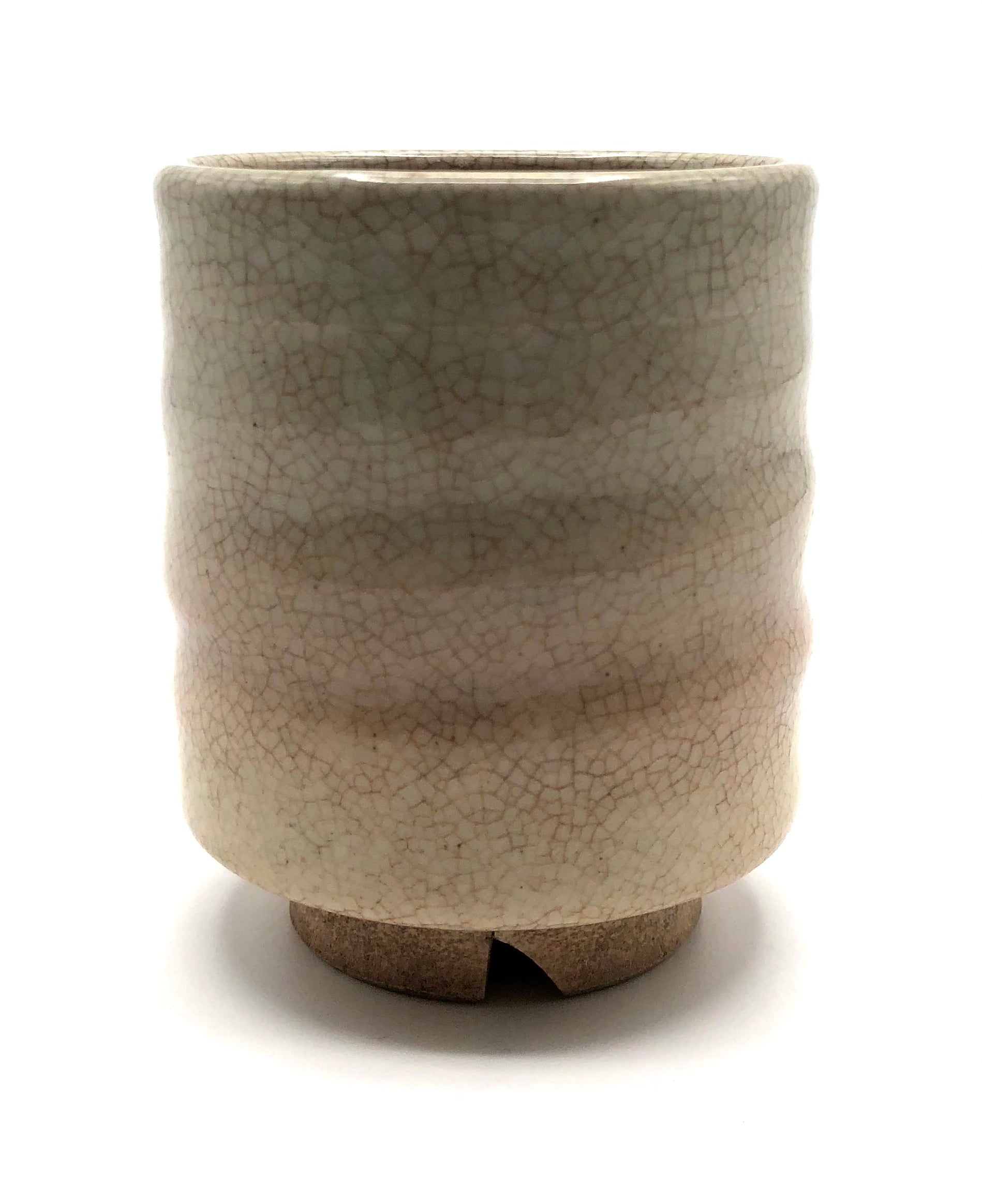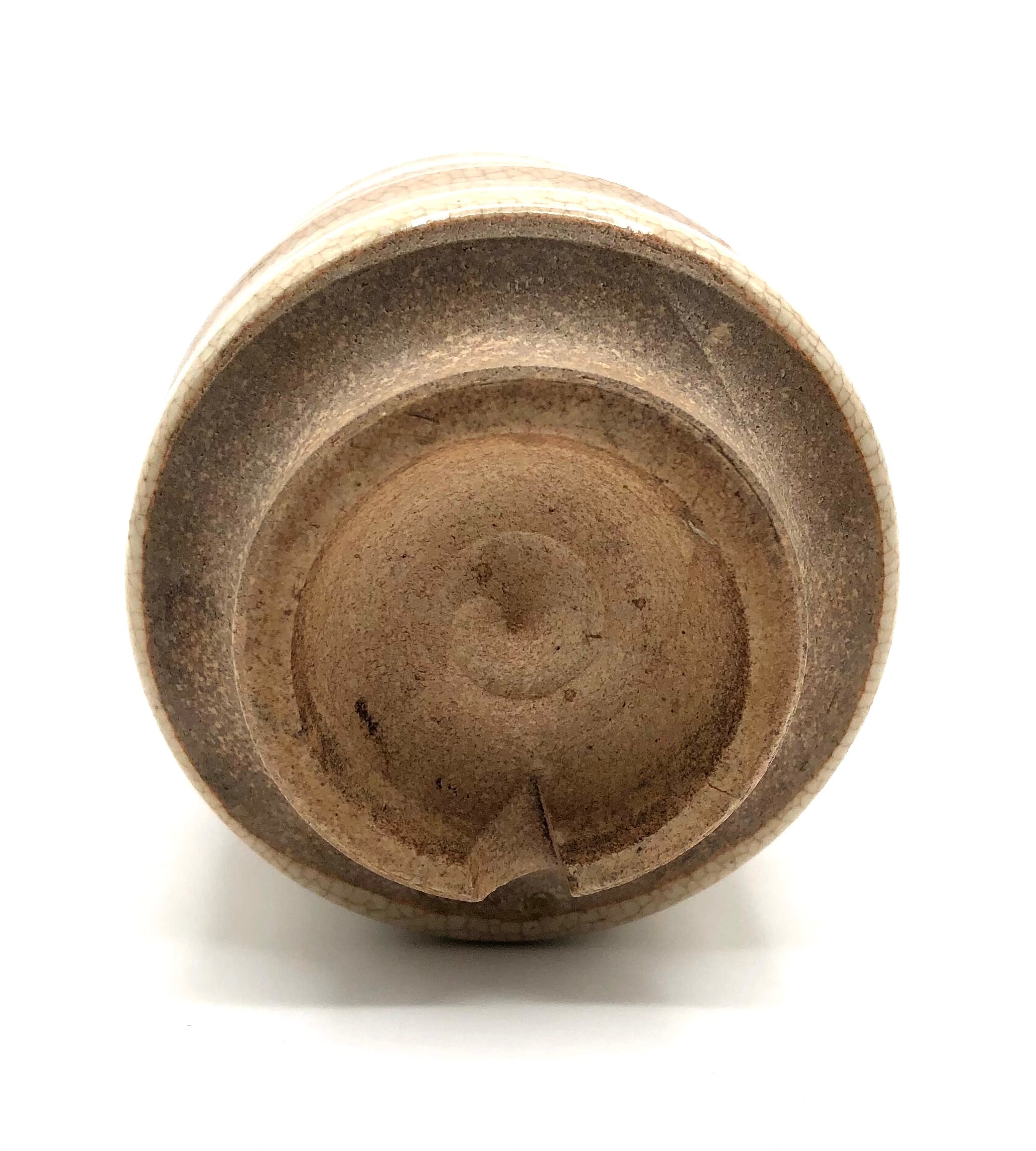

Vintage Japanese Hagi-yaki Yunomi Tea Cup | Miwa Kiyusetsu X Contemporary Studio Ware
Dimensions: 3-0”h x 2-3/4” dia.
This adage which is commonly heard in tea ceremony circles shows how highly valued Hagi ware is in the world of Japanese ceramics. Hagi-yaki, or Hagi ware, developed over 400 years ago is a regional style of Japanese ceramics that comes from the area around the town of Hagi in Yamaguchi Prefecture, for which it is named. Hagi-yaki remains highly valued within the traditional aesthetics of practically all tea ceremony schools, with some of the oldest Hagi-yaki pieces declared National Treasures of Japan.
Devoid of unnecessary decoration or complication, this cup exhibits Hagi-yaki’s characteristically natural warm hues, simple lines, and elegantly understated glaze which is subdued seeking to highlight and complement the inherent form and the Earth Ash (dobai) yielding a translucent, warm beige glaze. This yellow-white clay is similar to Kaolin is made to create porcelain objects.
Hagi teaware is said to improve with age as the tea slowly stains the clay through the fine cracks in the glaze, it deepens and enriches the piece’s color and texture in a process known as nanabake. Finally, on the bottom of the lip there is a “notch” or “chip” (kiri-koudai) on the turned foot, which is a characteristic and iconic feature signature of Hagi-yaki. An important element to remember is Hagi ware can last for many lifetimes, elegantly aging over time, but Hagi-yaki’s porosity means that it is very important not to use soap when cleaning Hagi ware, as it too can seep into the clay. Hagiyaki Kaikan, the shop where it was purchased said the piece was made by Miwa Kiyusetsu X. No Kiriwood box available.
Additional Information: Hagi-yaki pottery is influenced by Hideyoshi’s invasion of Korea in 1592. Hideyoshi ordered a Hagi lord, Mori Terumoto, to bring back two famous Korean potters, the brothers Yi Sukkwang and Yi Kyung, and made them establish kilns in Hagi. This is why Hagi-yaki pottery was also called Kourai, or Korean pottery.
Condition: Excellent, original condition and retains the original craft/workmanship. There is no discoloration, chipping/cracking, surface wear, or structural damage. New and never used after purchasing the piece is 2001.
